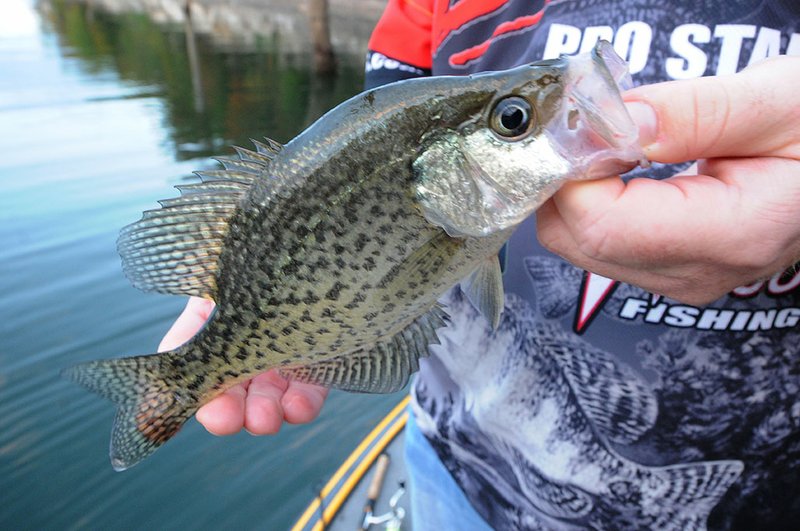GENTRY -- About 5,000 crappie have been stocked into Swepco Lake two miles west of Gentry. The fish average five inches long. They are expected to grow to 10 inches in a year or two.
Anglers at Swepco Lake shouldn't be surprised if they find an occasional crappie tugging on their fishing line.
The Arkansas Game and Fish Commission stocked 22,000 five-inch black crappie in the lake earlier this fall. The 500-acre lake two miles west of Gentry is known for outstanding largemouth bass fishing. Crappie have been in the lake, but in low numbers.
Stocking the fish will hopefully establish a plentiful crappie population at Swepco, said Jon Stein, regional fisheries biologist with Game and Fish. The stocked crappie are large enough that not many will be eaten by largemouth bass, Stein noted.
In addition to crappie, several thousand threadfin shad were stocked so bass, and the crappie, too, will have more food. Larger gizzard shad are plentiful in Swepco Lake. Gizzard shad and sunfish are the primary food of Swepco's black bass population, Stein said.
Redear sunfish were stocked in Swepco about three years ago. The redear are another food for largemouth bass, and food for anglers, too.
Most crappie fishermen consider a keeper crappie to be about 10 inches long. The stocked crappie should reach 10 inches in a year or two, Stein said. Right now there's no length limit on the crappie at Swepco Lake.
The statewide daily limit of 30 crappie currently applies, but the newly stocked crappie are so small anglers are unlikely to catch many. If the crappie do well, stricter regulations might be needed down the road, Stein said.
The crappie were raised at the Charlie Craig State Fish Hatchery in Centerton where the water is about 20 degrees colder than Swepco Lake. Stocking those crappie at Swepco was tricky because of the lake's warm water, said Heath Dake, a technician at the hatchery.
Swepco Lake stays warm in winter because hot water from the coal-fueled Flint Creek Power Plant is discharged into the lake. Average water temperature is about 70 degrees during fall and winter.
Warm water from Swepco Lake had to be trucked to the hatchery. Crappie to be stocked were tempered gradually from the cold 50-degree hatchery water to the 70-degree water from Swepco Lake.
The crappie are unique in that they are the black-nose variety of black crappie, Dake said. These have a black stripe from their eyes down to their mouth.
About 80 percent of the crappie stocked are the black-nose variety, he said. Black crappie have black spots on their sides, while white crappie have stripes. Anglers catch black-nose crappie from time to time at other area lakes, including Beaver.
Largemouth bass will no doubt remain the marquee fish at Swepco Lake, but crappie aficionados may soon be able to catch their favorite fish, too.
Sports on 12/05/2018

